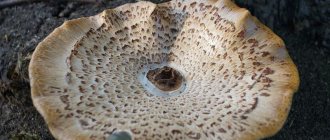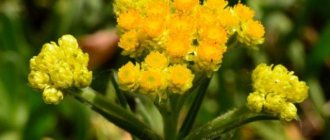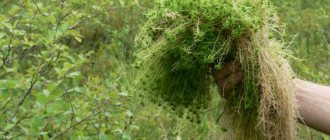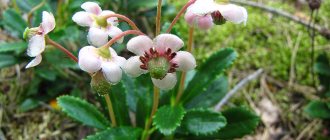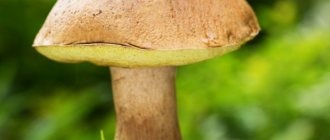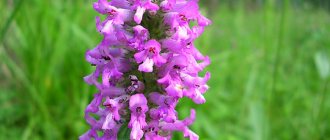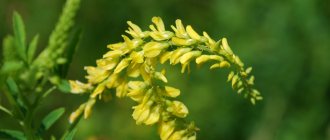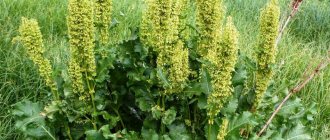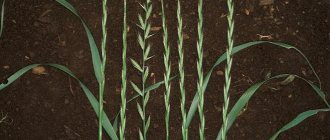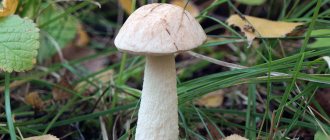Polypores (lat. Fomes fomentarius) are perennial parasitic fungi that prefer to grow on trees. You rarely see them on earth. They like old stumps and trees, dead wood, and dead wood. This is the most mysterious and unusual representative of the mushroom kingdom. At first glance, it is a completely useless, parasitic object. But, in fact, tinder fungi can be extremely useful.
Features of tinder fungi
Polypores represent a non-systematic and little-studied group of fungi, which belongs to the department of basidiomycetes. About 1.5 thousand species are known. There are poisonous and edible tinder fungi, woody and gristly ones. The fungal body of all tinder fungi is extremely resistant to any weather influences - cold, heat, moisture.
Polypores are attached to the tree body with the entire fruiting body or just the stem, depending on the species. Because of its original shape, the mushroom is popularly called the “devil’s hoof.”
The mushroom body is formed by thin threads - hyphae, intertwined with each other. The mycelium is buried deep in the woody body. To penetrate the bark, hyphae secrete enzymes that dissolve the cell walls of the wood. The hyphae, at first thin and filamentous, become skeletal.
Depending on the shape of the fruiting body, tinders are divided into:
- Sedentary. They are attached to the wood on one side. May have a side leg.
- Prostrate. They look like a thin cake, tightly attached to the trunk. They resemble tree bark in color and structure.
- With cap and stem.
The weight of the mushroom body is from 1 to 20 kg. Size – from 20 cm to 200 cm in diameter. They can be gray, red, black, orange, yellow - there are many shades.
Consequences for the tree
In the garden they are not orderlies, but real aggressors and unwanted guests. Trees affected by them are, unfortunately, doomed. And until they infect nearby plants, it is best to immediately cut them down and burn them. If the fruiting bodies of the fungus have already appeared on the surface of the bark, then its spores will be carried by the wind and infect neighboring plants. In former times, there was a strict instruction from the USSR Ministry of Agriculture, which ordered the heads of collective and state farms and chief agronomists to immediately burn fruit trees infected with tinder fungi. It was even forbidden to use wood from diseased trees for fuel. Only complete and immediate destruction!
A tree trunk infected with tinder fungus.
Most often, tinder fungi settle on old or weakened plants. And this is evidence of the last stage of the tree’s life: it is almost impossible to cure it. After all, the fruiting bodies of tinder fungi, which we see on the trunks and branches of trees, appear only a few years after infection, when the mycelium of the fungus has already penetrated all the wood and there is no way to “etch” it. You can only delay the death of the tree for some time. When sick, it becomes fragile and easily breaks by the wind under the load of crops, and hollows form in it faster than usual.
Material on the topic: What mushrooms look like and where to collect them.
More than 20 species of various tinder fungi parasitize apple, pear, plum, cherry plum, cherry and cherry trees. Among them there are typical “hooves” and “hats”, and bizarre needle-like outgrowths, and outstretched membranous bodies. They can be woody and leathery, fleshy and fibrous. “Devil's hooves,” as these tinder fungi are popularly called, are not afraid of the hot sun, heavy downpours, or winter blizzards. In color, these mushrooms are brown, black, yellow, silver-gray, variegated, and orange.
As for the size of the fruiting bodies, in some polypores they are cheap - only 0.5 - 1 cm. But they can (as, for example, in real and flat polypores) reach a diameter of up to 1 m and weigh up to 10 kg. Fruiting bodies sometimes stretch along a dead trunk or log by 1 - 1.5 m, most often their diameter is 5 - 25 cm. The sizes depend on the weather, the position and condition of the tree on which they settled. But tinder fungi have one common property: they all cause rot and irreversible destruction of wood, the plant pathologist emphasizes.
When and where does it grow?
The habitat depends on the type of tinder. Thus, the sulfur-yellow (conditionally edible) tinder fungus prefers places with a mild climate. But the real tinder fungus is widespread throughout Russia and Europe. It loves to grow on birch and pine trees, and can also be found on alder, oak, beech, and other trees.
On the one hand, saprophyte negatively affects the environment. Causing white rot in wood tissue, it makes it brittle. It usually affects dead wood, since the main way of infecting a tree with tinder fungi is:
- broken branches;
- cracks and other damage in the bark.
Parasitic mushrooms are real forest orderlies. They destroy old wood that has died due to windbreaks, drought or other adverse influences. Decayed wood enriches the soil.
It is recommended to collect polypores for pharmaceutical and food purposes:
- during spring sap flow;
- In the fall, the mushroom, preparing for winter, stores up useful substances.
You should not take tinder fungi:
- growing on dead wood;
- growing near the ground.
Preferably mushrooms located as high as possible. Mushrooms are cut with a well-sharpened knife or ax. If the mushroom body crumbles, it is not suitable for collection.
Collection and preparation
Mushroom picking time is from August to November. The right decision would be to search for tinder fungi at a young age, but in older ones it is better to use only the cap. They are eaten fresh: they are rarely salted and dried. It is more convenient to knock down large fruiting bodies (always white inside) with sticks or axes. But they should be cut exclusively from living trees, and not rotten trunks. Among the tinder fungus, there are 2 commercial varieties of the fungus - cleared of bark residues and cleared, in addition, of its own outer crust. The pulp must be cut into pieces before further processing. Infusions are prepared using boiled water or vodka and are always infused. Mushrooms should be stored in the refrigerator.
Varieties
For tinder fungi, in mushroom science, a special classification is provided. They are divided into:
- Hymenomycetes - their mycelium is located in the substrate, for example, in wood or soil;
- Gasteromycetes - their fruiting bodies are completely closed.
Among tinder there are several families:
- poriaceae;
- polypore;
- telephore;
- Coniophoraceae.
Polypores are mostly perennials, but there are also annual representatives. They grow throughout the summer - from June to September. At the end of summer, annuals gradually break down and become food for insects.
The body of a perennial grows for months, or even years. By looking at the annual rings you can find out how many months or years the tinder fungus is. The mushroom is characterized by species diversity. Let's look at the most famous and common types of tinder fungi.
Application
In addition to medicine, birch sponge has found application in many other industries. The upper part of the fruit body has a hard, leathery surface. If you remove it in the form of strips, you can use it as a sharpener for straight razors, and also as an emery cloth for polishing metal (with its help a decorative shine is achieved).
Another of its functionality is associated with the dense structure of the pulp of the fruiting body. Like the real tinder fungus, the birch tinder fungus can be used as tinder (igniting from one spark and smoldering for a long time). It was formerly used as a means of maintaining and transporting embers from one camp to another, in order to avoid the need to repeat the laborious process of producing fire.
Using the tinder fungus.
Edible tinder fungi
Among tinder there are edible and inedible species. The latter are the overwhelming majority. There are no poisonous varieties among tinder fungi. You can’t get poisoned by the pulp of tinder fungi; it’s just extremely harsh in many representatives of the group. And the taste of these mushrooms is not impressive.
When going into the forest, carefully study the appearance of edible tinder mushrooms. Among them there are several quite tasty specimens - they are used in cooking.
Sulfur-yellow tinder fungus
It is classified as conditionally edible, and the toxins contained in it can cause poisoning. The “young animals” are eaten – their flesh is much more tender than that of the old-timers.
Only young sulfur-yellow tinder fungi growing on deciduous trees are suitable for food. There should be no dark spots on their caps.
Cut mushroom bodies can be stored in the refrigerator for 3-5 days. They can also be frozen for a whole year. To prevent the product from deteriorating, a temperature of at least minus 18°C is needed.
In the video you can see how sulfur-yellow tinder fungus is fried with onions and dill in forest conditions. The recipe is clear, step-by-step. The author of the video also suggests other ways to prepare tinder fungus:
Scaly
Prefers to grow on deciduous trees, especially elms. Its yellowish-gray fruit body is covered with brownish speckled scales. Scaly polypores grow singly. They have thick black legs. When young, they are suitable for food - they are pickled, salted, dried, and added to sauces and soups. Traditional medicine uses them to produce drugs that stimulate the functioning of the gallbladder.
liverwort
It can be found on oak trees. It is shaped like a tongue. The body is fleshy, as if saturated with red liquid. Growth time: from July to frost. The section shows a marble pattern. Used at a young age - for pickling.
Umbrella
Resembles a large lace bouquet. Cap color is brown. There is a multi-colored border. Stripes can be of different colors - black, beige, lemon, orange. Umbrella polypores are popular in China. Here it is often served as a main course.
Winter
It grows on stumps and trunks near the ground. Prefers alder, rowan, and willow. Growth begins in the spring. Grows until frost. The shape of the cap is convex. Color – from yellowish to grayish. The white flesh is suitable for eating. Usually used for drying.
Sheep
More than others, it resembles a mushroom in the classical presentation. Its fleshy round cap has folded edges. The leg is short and thick. Used in folk medicine and pharmacology. Young fruits are used to prepare powders, extracts, infusions - water and alcohol. When young, it is used as food. Sheep tinder fungus can be pickled, dried, and salted.
Branched and umbellate types of tinder fungi
Branched polypore in the photo
The caps are leathery and fleshy.
The tinder fungus is branched. The fruiting body is up to 50 cm in height, up to 40 cm in diameter and weighing up to 10 kg when fresh, consists of a central re-branching stalk and numerous (up to 100) small flat caps. The caps are leathery-fleshy, 4-10 cm in diameter, on lateral stalks, with an uneven radial-wrinkled nut-colored surface. Pores up to 1 mm in diameter. The central leg of the branched tinder fungus is short and thick, the secondary legs are of varying thickness, flat, and grayish-cream after drying. The pulp is white, the color does not change when broken, with a pleasant smell and pleasing taste. Spore powder is white. Spores 7–10×2.5–4 µm, fusiform, smooth, colorless.
Growth. Grows as a parasite on the roots of deciduous trees (oak, hornbeam, beech, chestnut).
Causes white heart rot with numerous small cavities that eventually fill with a white, cotton-like accumulation of mycelium.
Fruiting. From July to October.
Usage. A good edible mushroom.
Umbrella tinder fungus. In Russia it is found in the European part, the Caucasus, Siberia and the Far East. Outside Russia, it is distributed in Europe, Asia and North America.
A tinder fungus with large fruiting bodies, reaching 50 cm in diameter, consisting of numerous branched, clearly visible legs, connected at the base into a common tuberous stump and bearing small caps. The caps are round, with a depression in the center, light ocher or brownish, smooth, and on the lower surface they bear a tubular hymenophore descending onto the stalk. The pulp is white, dense, fleshy, with the smell of dill. The tubes are white and short. The stump and legs are white, cream or yellowish. The spores are colorless, smooth, cylindrical or fusiform, 7-10 x 3-4 µm. Causes white rot. Fruiting bodies are formed in July-August, but not annually.
It develops in deciduous and coniferous-deciduous forests at the base of trunks and stumps of deciduous trees (maple, oak, etc.), as an exception - conifers.
Protected in the Kichmengsko-Gorodetsky Nature Reserve. It is necessary to search for new locations of the species and include them in the list of specially protected sites. The species is included in the Red Data Books of the RSFSR and the Moscow Region.
Here you can see photos of edible and inedible tinder fungi, the description of which is presented on this page:
Conditionally edible mushroom Scaly tinder fungus in the photo
Edible “winter” mushroom in the photo
Good edible mushroom Tinder Branched in the photo
Inedible tinder fungi
Inedible polypores are not deadly, but can cause unpleasant symptoms:
- allergic reaction;
- intoxication of the body with corresponding symptoms - vomiting, dizziness, nausea.
Many tinder fungi, including inedible ones, are actively used in medicine - medicinal products are prepared from them. Any use of mushrooms should be preceded by consultation with a physician.
Birch
Likes to grow on dead birch trunks. Its body is convex, gray-white in color. It contains many amino acids and microelements. This was appreciated by microorganisms and insects, who generously laid larvae in the mushroom. Pharmacology uses mushroom polymers isolated from this mushroom to produce dietary supplements for diabetics.
The video talks about birch polypore, its various uses (medicine) and other beneficial properties. The blogger shows from his own experience how to use it correctly:
Beveled
It is also called chaga. Grows on birch, alder, and rowan trees. The body is hard, woody. The shape is irregular, the surface is rough. Color – dark brown or black. There are white veins on the cut. Chaga is used in medicine - for decoctions and infusions.
Coarse-haired
Prefers stumps and semi-dry trees. The hat is large and rough, looking like a sponge. At a young age it has a yellowish or grayish color, and as it grows it becomes brown with a greenish tint. The taste of the pulp is unpleasant - bitter, reeks of anise.
Humpback
The hat has the shape of a semicircle. The shade is greenish. The pulp is dense - white or yellow. The surface of the cap is velvety. The mushroom strengthens blood vessels. It is part of drugs used to treat sarcoma, throat cancer, and leukemia. Recent studies have shown that the humpback polypore has a detrimental effect on the AIDS virus.
Larch (real)
Grows on larches, fir, cedar. Has a thick fruiting body. Length – 30 cm. Color – white or yellow. The surface is rough. There are furrows and brown spots. Young - soft, later - hard, crumbling. The taste is bitter.
Lacquered (reishi)
A mushroom with unique properties. It is actively used for the treatment of oncology and the cardiovascular system. Demanded in folk medicine.
Types of tinder fungus
Scaly polypore (Polýporus squamosus)
An edible species, only young mushrooms are used for food.
The fruiting body is annual, located low above the ground on tree trunks. The cap is fleshy, about 30 cm in diameter, in a young mushroom it is kidney-shaped, later it becomes prostrate. The edge is thin, curved down. The pulp is soft, the old mushroom is hard, crumbles, the smell is mealy, pleasant. The hat is colored light yellow or grayish. The surface is scaly. The leg is up to 10 cm high, up to 4 cm in diameter, dense, whitish above, brownish-black below.
The species is found in the USA and Europe. The mushroom appears in the spring.
Sulfur-yellow tinder fungus (Laetiporus sulphúreus)
Edible mushroom.
The fruiting body is annual, located low above the ground on tree trunks or stumps. The young mushroom looks like a drop-shaped yellowish fleshy mass from bright yellow to orange. Gradually it hardens, takes on the characteristic shape of an “ear”, which consists of pseudo-caps, the size of which is 10-40 cm. The thickness reaches 7 cm. The weight of the mushroom reaches 10 kg or more. The edge of the fruiting bodies is wavy. The surface is covered with creamy yellow fluff. The pulp is soft, juicy, brittle, white, the taste is sour, the smell of young mushrooms is lemony, and that of old mushrooms is unpleasant and mousey.
This parasitic fungus grows on poplars, oaks, willows, lindens, birches, cedars, pine trees, maples, walnuts, chestnuts, fruit trees, and larches. Causes red-brown stem rot and destroys wood. The mushroom is found from late May to September.
Umbrella polypore (Polýporus umbellatus)
Edible mushroom.
The fruit body consists of small light gray or gray round caps, which are arranged like tiles. The bases of the legs are connected. The pulp is dense, white or creamy.
Tuberous polypore (Polyporus tuberaster)
Edible mushroom.
The cap is light, flat, the center is depressed, the edge is hard, the surface is scaly, brown. The leg is brown, central. The pulp is whitish and hard.
Poisonous and inedible types of tinder fungus
True tinder fungus (Fomes fomentarius)
Inedible mushroom.
The fruiting body is perennial, sessile, round in the young mushroom, and later acquires a hoof-like shape. It is attached to the tree trunk only by the upper central part. No legs. The cap is large, about 40 cm wide and up to 20 cm high. The surface is matte, wavy, from light gray to dark gray. The pulp is dense and soft. Velvety when cut. The color of the pulp is brown or reddish-brown.
The fungus causes white rot. Found in Russia and Europe on deciduous trees (birch, aspen, alder, oak, beech).
False polypore (Phellinus igniarius)
Inedible mushroom.
The fruiting body is perennial, sessile, round in the young mushroom, later hoof-shaped. It is very firmly attached to the tree trunk, which makes it different from the real tinder fungus. The cap is 20-26 cm in diameter. The surface is matte, uneven, from dark gray to almost black. No legs. The pulp is hard, woody, reddish-brown in color.
A parasitic fungus that causes yellowish-white rot. Found in Russia and Europe, on living and dead trees, stumps, and dead wood.
Birch polypore (Piptoporus betulinus)
Inedible mushroom.
The fruiting body is annual, without a stalk, 10-20 cm wide, 2-6 cm high, spherical in young mushrooms, later horseshoe-shaped, gray-brown, with a thick edge. The pulp is white, the smell is strong, mushroom, the taste is bitter.
It grows singly or in groups, on the trunks of dead birches, and rarely on living ones. Causes yellowish-brown or reddish-brown rot. Widely distributed in Western Siberia.
It contains polyporenic acid, which has an anti-inflammatory effect equal in strength to cortisone.
Lacquered tinder fungus or lacquered ganoderma (Ganoderma lucidum)
Inedible mushroom. In China and Korea it is known as “ling-zhi” (mushroom or herb of immortality), in Japan it is called “reishi” (mushroom of spiritual power) and “mannentake” (ten-thousand-year-old mushroom).
The fruiting body is annual, capped. The cap is kidney-shaped or ovoid. The surface is smooth, shiny, wavy. The pulp is dense, woody, ocher, the smell and taste are not pronounced. The leg is 5-25 cm high, 1-3 cm thick, lateral, cylindrical in shape.
A parasitic fungus that destroys wood as it causes white rot. Distributed throughout the world, it grows on dead wood of deciduous trees and on stumps. The growing season lasts from July to late autumn.
Edged polypore (Fomitopsis pinicola)
Inedible mushroom.
The fruiting body is perennial, sessile. The young mushroom is round or semicircular, later cushion-shaped or hoof-shaped. No legs. In humid weather, large transparent drops appear on the surface. The hat is 15-30 cm wide and about 10 cm high. Concentric zones of different colors are clearly visible on it. Old areas are gray-gray or dark gray-brown. The outer side is red, orange or yellow-orange. The surface is matte, uneven. The pulp is dense, elastic, sometimes woody, yellowish-beige or light brown in color; in mature mushrooms it is dark brown.
The fungus causes brown rot. Grows in the temperate climate zone of Russia and Europe, on stumps, deciduous and coniferous trees.
Chestnut polypore (Polyporus badius)
Inedible mushroom.
The cap of young mushrooms is smooth, shiny, gray-brown in color; in mature mushrooms it is dark chestnut, the edge is sinuous, orange-red. The surface is porous and becomes oily in wet weather. The leg is short, gray-brown or black. The pulp is hard, yellowish-whitish in color.
Winter polypore (Polyporus brumalis)
Inedible mushroom.
The cap is gray-brown, round, with a depressed center, the edge is turned up, fringed. The leg is velvety, brown in color, the base is thickened. The pulp is white, hard.
Polypore polypore (Polyporus varius)
Inedible mushroom.
The cap is smooth, golden yellow or light brown in color, the edge is fibrous, lobed. The leg is eccentric, light brown in color, darkens with age. The pulp is hard, from white to dark brown, with a mushroom smell.
Polypore, or Phaeolus Schweinitzii (Phaeolus schweinitzii)
Inedible mushroom.
The diameter of the cap is 10-30 cm, in young mushrooms it is yellow, later rusty-brown or dark brown, the edge is yellow, the shape is flat. The pulp is yellow-brown or rusty-brown, the taste and smell are not pronounced.
Why are tinder fungi dangerous for trees?
Polypores are parasites; they use trees as food sources. By sucking nutrients and water from the wood, they slowly kill it. Several years pass until the plant, exhausted by parasitic fungi, loses strength and strength - it becomes dry. A small hurricane is enough to break a fragile tree. But the tinder fungus doesn’t care about this development of events - they continue to drink juice from the tree fallen by the windbreak.
Killer mushrooms perform an important mission in the forest - they make room for new trees. Peculiar forest orderlies. But in orchards grown by humans, tinder fungi must be fought mercilessly.
Similar species
The real tinder fungus has practically no counterparts in the world of mushrooms - it is too specific, attached to tree trunks, and has a unique cap color. But common features are visible with the false polypore (Phellinus igniarius), but the hero of the article is much easier to detach from the tree than a representative of this species, especially if you tear it off from the bottom up.
Also, a true tinder fungus can be confused with a fringed tinder fungus (Fomitopsis pinicola). However, the second one can also live on coniferous trees, and its fruiting bodies are flatter in appearance. The main difference is the bright border along the edge of the cap.
Both similar species are inedible, and the false polypore is not used even for economic purposes.
What affects the growth of tinder fungus?
Polypores live on both dead and living trees. Ideal growing conditions for tinder fungi:
- The specific type of tree depends on the type of tinder fungus. Some people like coniferous trees, others like deciduous trees.
- The fruiting body needs light.
- High humidity promotes growth. It is not in vain that tinder species look for damp places - cellars, earthen shelters, wells.
The more nutritious the wood, the more minerals it contains, the faster the parasitic fungus grows, and the faster it kills its owner.
In unfavorable conditions - inappropriate humidity, temperature, pressure - tinder fungi stop growing. Gardeners take this feature into account in the fight against parasitic fungi.
Taxonomy and variability of the fungus
The taxonomy of the variety is as follows:
- Department - Basidiomycetes.
- Subdivision and class - Agaricomycetes.
- Order - Polypore.
- Family - Fomitopsis.
- Genus - Letiporus.
- Species - Laetiporus Sulphureus.
The variability of the sulfur-yellow polypore is that adult fruiting bodies become paler. Literally 4-5 weeks after ripening, the mushrooms acquire a gray tint.
The value and benefits of the mushroom
The chemical composition of many tinder fungi is poorly understood. Scientists have discovered antitumor substances in these mushrooms, so their composition is now being actively studied. In tinder bodies, one can find “deposits” of potassium, calcium, copper, iron, manganese, zinc, lead, cadmium, and germanium. The collection of tinder fungi intended for medicinal or food (if the species is edible) purposes is not recommended near roads and near industrial zones.
The mushroom is popularly called chicken of the woods due to its unusual shape and nutritional value. 100 g of fruiting body contains 22 kcal. 100 g of mushroom contains:
- protein – 3.09 g;
- fats – 0.34 g;
- carbohydrates – 3.26 g;
- water – 92.45 g.
And:
- cellulose;
- resinous substances;
- B vitamins;
- minerals;
- lipids;
- amino acids.
Medicinal and beneficial properties of tinder fungus
A significant amount of bioactive substances have been found in the tinder family. The leading place among them is occupied by the following elements:
- amino acids;
- glycosides;
- steroids;
- lecithin LSL;
- polysaccharides;
- phenols;
- phytoncides;
- pigments;
- cellulose;
- mineral compounds (manganese, magnesium, potassium, iron, sodium, zinc, aluminum, cobalt, copper, nickel, silicon, silver);
- organic acids (acetic, oxalic, formic, butyric and others).
The watery extract of fresh fruiting bodies is characterized by pronounced antimicrobial and antiviral effects. The mycelium extract suppresses the malarial plasmodium and is considered methicillin-resistant Staphylococcus aureus, and in addition is toxic to Escherichia coli, one of the main causative agents of inflammation of the urinary canals in fibrosis. And recent experiments have confirmed the fact that the elements that make up this mushroom reduce the risk of contracting the HIV virus.
Among other medical properties, we can highlight the reduction of blood sugar levels and noticeable benefits for endocrine diseases due to the content of eburicoic acid. Some sources claim that this mushroom is used as a mildly poisonous and even hallucinogenic mushroom, since it has a laxative effect.
Excessive consumption of polypore may cause swollen lips, nausea, vomiting and dizziness.
Regarding the medicinal properties of the mushroom, the risk of allergic reactions when eating it cannot be ruled out. Typically, such information refers to specimens collected from coniferous trees, so in order to exclude cases of poisoning and negative consequences, you should look only for those tinder fungi that grow on deciduous trees.
Application in medicine
Polypores are valued primarily as a medicinal product. Mushrooms are used for external and internal use. They are prepared from:
- alcohol tinctures;
- decoctions;
- dry powders - for dissolution in water.
Polypores promote the breakdown of fats, remove radionuclides, carcinogens and poisons from the body, restore the digestive system, treat constipation, and kill bacteria that cause gastritis.
Each tinder has certain properties, so specific types of tinder are used to treat certain diseases.
We treat the liver
An important property of tinder fungus is the speedy recovery of the liver. Siberians were already aware of it several centuries ago: it was they who collected the mushroom and drank it in the form of special mixtures and powders, which contributed to the production of enzymes that break down protein. And the fair half of humanity has gotten used to using such an unusual mushroom as an ideal remedy to get rid of excess weight.
This topic was picked up and developed by Japanese scientists, quickly realizing that a lot of money could be made from this drug. Asian pharmacological companies began to actively produce tablets and medicinal tinctures based on tinder fungus, buying the mushroom in huge volumes in Russia. During the development of the new formula, the Japanese discovered an interesting component in the mushroom - the polysaccharide lanofil, which helps the liver quickly secrete the necessary enzymes that help the organ work better. For example, the following recipes are especially effective:
- 0.5 tsp. ground tinder fungus must be mixed with a glass of boiling water and kept in a water bath for at least 15 minutes, after which the resulting drink should be gradually drunk throughout the day in small sips, and to make the taste sweeter, you can add 1 tsp. honey;
- 1 tsp. (without a slide) mix finely crushed tinder fungus in 1/2 cup of boiled water and take 3 times a day half an hour to 40 minutes before meals;
- dry the birch tinder cap well and grind it into powder, to which you should add vodka or alcohol in the proportions of 5 g per 150 ml, and let it brew in a cold, dark place for 2 weeks, take 1 tsp. 3 mixtures per day;
- 3 tbsp. l. chopped mushroom should be poured into 0.5 liters of vodka, kept for 1.5-2 weeks at a cool temperature, without straining, and drunk 2-3 tsp. tinctures 2 times a day 25 minutes before meals.
Attention! The medicinal properties of birch chaga are also used in folk medicine to prevent stomach ulcers and tumors. The mushroom perfectly helps to heal external and internal wounds on the walls of organs and heal cracks.
Growing
All tinder species reproduce by spores - they are located on the basidia. Groups of spores, maturing in tubes tightly fused together, spill out. They are carried away by the wind to new habitats. Once on fertile soil - old or damaged wood, they begin to reproduce. A mycelium is formed, which, branching along the tree bark, destroys it.
Growing on substrate
Polypores are easy to cultivate. They are grown in substrate. To prepare it you need:
- sawdust;
- shavings;
- bark of small branches.
Stumps and wooden beams can be used as a substrate. After making holes with a drill, the mycelium is placed in them.
The order of mycelium laying:
- The mixture is poured with boiling water.
- When the temperature of the substrate drops to room temperature, it is squeezed out and mixed with mycelium.
- Place in plastic bags.
- Having made slits in the bags, they are placed in a room where the humidity is 80%. Lighting – natural, temperature – 20°C.
- The harvest will be ready after 30-40 days.
Growing on stumps
Instead of a substrate, you can use stumps and wooden beams. Disembarkation order:
- The wood is kept in water.
- The required number of cuts are made on the soaked wood - they are sawed out or drilled.
- The mycelium is placed into the cuts made.
- Wooden beams are placed in a shady place and covered with foliage.
The “crops” are watered from time to time, this is especially important during drought. The first mushrooms will appear in 4 months.
Polypores are a real gift of nature. You should not perceive them negatively - there is nothing superfluous in nature, and tinder fungi are only part of the cycle of substances. Polypores are invaluable for pharmacology and a real treasure for medicine. And edible mushrooms of this family are also excellent meat substitutes.
0
0
Copy link
The meaning of the false tinder
Let's draw conclusions.
In nature, the false polypore is important as a saprophyte, decomposing wood and converting it into substances available for absorption by other plants.
The false polypore can cause significant damage to forestry, acting as a parasitic fungus and infecting living trees. By destroying cellulose and lignin, the fungus can quickly make the tree in which it has settled “inanimate.”
At the same time, false polypore should be considered as a medicinal mushroom. Substances from its composition have antitumor, hepatoprotective (liver protection) effects, and help strengthen the immune system.
You only need to collect young fruiting bodies of the false, small-sized tinder fungus. They need to be cut into pieces and dried, like chaga, at a temperature not exceeding 60°.
Of course, we are not talking about using the mushroom as food. A woody fruiting body is not the most suitable object for this. But it is quite possible to dry the false tinder fungus, and brew the pieces of the fruiting body ground into powder as tea.
Best regards, Alexander Silivanov
Contraindications and possible harm
Dishes made from tinder fungus, even young ones, should not be consumed by children, the elderly, people with gastrointestinal diseases, as well as expectant and nursing mothers. Like most other forest mushrooms, tinder fungus is a rather difficult product for the digestive system. And for children under 8 years old, any mushrooms are contraindicated.
Remember!
Regarding medicines and dietary supplements based on these mushrooms, they should absolutely not be taken without first consulting your doctor. Such preparations may contain components that cause allergies or individual intolerance.
In addition, you should never self-medicate. Any disease requires a clear diagnosis, and this can only be done by a doctor after a series of medical tests. And only a doctor can determine the most effective treatment program, including the use of drugs containing tinder fungus extract.
In the 1990s, in the Alps, scientists found a human mummy more than 5 thousand years old, and in his bag they found a piece of birch tinder fungus. This fact, according to experts, suggests that humanity has been using the beneficial properties of this mushroom for many centuries. Meanwhile, we should not forget that any medicinal plant can become poisonous to humans if used incorrectly. The same applies to tinder fungi.
Reishi protects the cardiovascular system
The cardiological effects of tinder fungus are associated with the presence of organic germanium in its composition. This element improves blood circulation in the body, as a result of which the risk of tissue hypoxia is halved. Scientists believe that when germanium enters the bloodstream, it behaves like hemoglobin.
Benefits of reishi mushroom for the cardiovascular system:
- Helps reduce platelet aggregation in the blood, reduces the risk of strokes and heart attacks.
- Dilates the coronary arteries, supports the myocardium during oxygen starvation.
- Has a moderate cardiotonic effect, reduces the negative effects of prolonged heart failure.
- Reduces heart rate and load on the myocardium, increases the elasticity of the valves.
Along with this, germanium, which is part of the tinder fungus, has antifungal, immunomodulatory, antitumor, antiviral and radioprotective effects on the body.
To enhance the pharmacological effect, drugs based on a parasitic fungus are taken together with organic vitamin C (L-ascorbic acid).
Chemical composition
Fruiting bodies are a source of useful substances. Hoof mushroom is rich in the following nutrients:
- polysaccharides;
- triterpenes;
- phytosterols;
- resins;
- essential oils;
- anthocyanins.
We recommend reading: Dandelion: beneficial properties and contraindications, reviews
These valuable components help activate natural antitumor immunity and reduce the risk of developing coronary heart disease. The use of blood sponge-based products can improve the cognitive functions of the brain and eliminate diseases of the nervous system.
